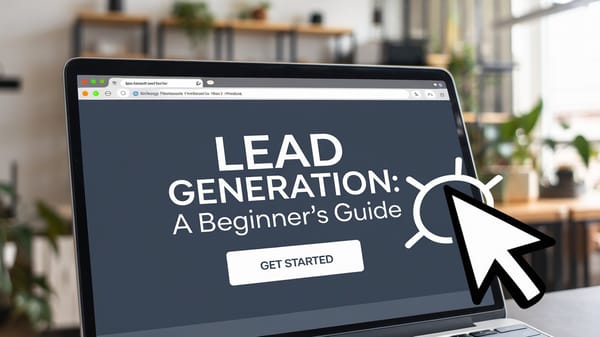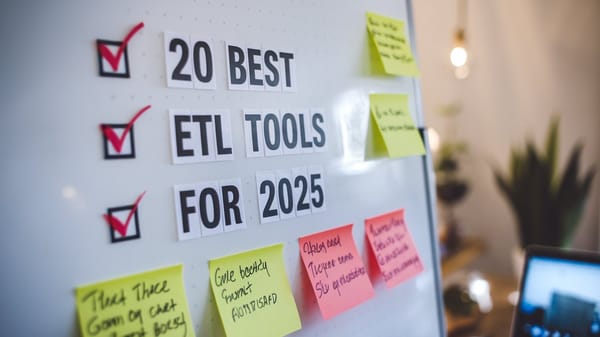Write Better Word At The Bottom Of Some Marketing Emails With AI

A critical yet often overlooked component of email marketing is the "word at the bottom of some marketing emails," commonly known as the email footer. This section, while positioned at the end of an email, plays a pivotal role in ensuring compliance, enhancing user engagement, and reinforcing brand identity. The footer typically includes essential elements such as unsubscribe links, company contact details, and legal disclaimers, which are crucial for adhering to regulations like the CAN-SPAM Act in the U.S. and GDPR in Europe.
The design and content of the email footer should not be an afterthought. A well-crafted footer can enhance user interaction by including social media links, calls-to-action, and even company values, as exemplified by brands like Whole Foods and United By Blue. These elements not only ensure compliance but also serve as a strategic tool for building trust and maintaining a connection with the audience.
In parallel, the integration of Artificial Intelligence (AI) in email marketing is revolutionizing how businesses connect with their audience. AI enhances email marketing by enabling hyper-personalization, optimizing send times, and automating content generation. According to Salesforce, AI can significantly improve open rates and engagement by tailoring content to individual preferences and behaviors. AI tools analyze vast amounts of data to predict user behavior, allowing marketers to craft highly targeted campaigns that resonate on a personal level.
Moreover, AI-driven email marketing tools, as highlighted by Taskade, offer capabilities such as automated segmentation, predictive analytics, and dynamic content generation. These tools not only streamline marketing efforts but also enhance the overall effectiveness of email campaigns by ensuring that messages are relevant and timely.
You can also visit Oncely.com to find more Top Trending AI Tools. Oncely partners with software developers and companies to present exclusive deals on their products. One unique aspect of Oncely is its “Lifetime Access” feature, where customers can purchase a product once and gain ongoing access to it without any recurring fees. Oncely also provides a 60-day money-back guarantee on most purchases, allowing customers to try out the products and services risk-free.
Oncely are hunting for the most fantastic AI & Software lifetime deals like the ones below or their alternatives:

As we move further into 2024, the synergy between well-designed email footers and AI integration presents a powerful opportunity for marketers to enhance their email marketing strategies. By leveraging these elements, businesses can not only comply with legal requirements but also foster deeper connections with their audience, ultimately driving growth and engagement.
Importance of the Email Footer in Marketing Campaigns
Enhancing Brand Identity and Trust
The email footer, often overlooked, plays a crucial role in reinforcing brand identity and building trust with recipients. It serves as a digital business card, providing essential information such as contact details, legal disclaimers, and social media links. This section is vital for maintaining transparency and compliance with regulations, such as the CAN-SPAM Act, which mandates the inclusion of an unsubscribe link and a physical address in marketing emails (Designmodo).
A well-crafted email footer can enhance brand recognition by consistently displaying the company's logo, tagline, and color scheme. This consistency helps in creating a cohesive brand image across all communication channels. Moreover, including links to social media profiles encourages recipients to engage with the brand on multiple platforms, fostering a sense of community and trust (Mailchimp).
Driving Engagement and Conversions
Email footers are not just about compliance and branding; they are strategic tools for driving engagement and conversions. By incorporating call-to-action (CTA) buttons, such as "Shop Now" or "Learn More," businesses can guide recipients towards desired actions. These CTAs can be tailored to align with the email's content, enhancing the overall effectiveness of the campaign (Designmodo).
Furthermore, email footers can include links to popular or relevant content on the company's website, encouraging recipients to explore more. This not only increases website traffic but also keeps the audience engaged with the brand's offerings. The strategic placement of these links in the footer ensures that they are accessible without overwhelming the main content of the email (Mailchimp).
Improving User Experience
A well-designed email footer contributes significantly to the user experience by providing a familiar and navigable environment. In today's digital landscape, where emails resemble miniature landing pages, the footer acts as a navigational tool, similar to a website footer. It offers quick access to important information, reducing confusion and frustration for the recipient (Designmodo).
For instance, if a subscriber wants to contact customer support or visit the company's homepage, they can easily find the necessary links in the footer. This intuitive design approach aligns with user expectations and enhances the overall satisfaction with the email interaction (Mailmodo).
Leveraging AI for Email Footer Optimization
Artificial Intelligence (AI) can significantly enhance the effectiveness of email footers by personalizing content and optimizing design elements. AI tools can analyze recipient data to tailor the footer content, ensuring that it resonates with individual preferences and behaviors. For example, AI can dynamically adjust the order of social media links based on the recipient's past interactions, prioritizing platforms where they are most active (Mailchimp).
AI can also assist in A/B testing different footer designs and content variations to determine which combinations yield the highest engagement rates. By continuously learning from these tests, AI can refine the footer's layout and content, maximizing its impact on the campaign's success (Neo Space).
Ensuring Compliance and Reducing Spam Risks
Compliance with legal requirements is a critical aspect of email marketing, and the footer plays a pivotal role in this regard. By including mandatory elements such as an unsubscribe link and a physical address, businesses can avoid legal penalties and reduce the risk of their emails being marked as spam. This not only protects the company's reputation but also ensures that emails reach the intended audience (Designmodo).
AI can further enhance compliance by monitoring changes in regulations and automatically updating the footer content to reflect new requirements. This proactive approach minimizes the risk of non-compliance and ensures that the company's email marketing practices remain up-to-date and effective (Hypotenuse AI).
In conclusion, the email footer is a powerful yet often underutilized component of marketing campaigns. By enhancing brand identity, driving engagement, improving user experience, leveraging AI, and ensuring compliance, businesses can maximize the potential of their email footers to achieve their marketing objectives.
AI's Role in Enhancing Email Footer Effectiveness
Personalization and Dynamic Content
AI technology has revolutionized the way email footers can be personalized to enhance user engagement. By analyzing user data, AI can tailor email footers to include personalized content such as the recipient's name, location, or even past purchase history. This level of personalization can significantly increase the relevance of the email, making it more likely to capture the recipient's attention and encourage interaction. For instance, AI can dynamically adjust the content of the footer to include personalized product recommendations or special offers based on the recipient's browsing history or previous interactions with the brand (Neo Space).
Moreover, AI can automate the inclusion of dynamic content in email footers, such as countdown timers for sales events or live social media feeds, which can create a sense of urgency and drive engagement. This dynamic approach not only enhances the visual appeal of the email but also provides real-time information that can prompt immediate action from the recipient (Salesforce).
Optimizing Design and Layout
AI tools can assist in optimizing the design and layout of email footers to ensure they are visually appealing and easy to navigate. By leveraging machine learning algorithms, AI can analyze user engagement data to determine which design elements are most effective in capturing attention and driving clicks. This can include optimizing the placement of social media icons, contact information, and call-to-action buttons to maximize visibility and interaction (Exclaimer).
Additionally, AI can help ensure that email footers are mobile-responsive, a critical factor given that a significant portion of emails are opened on mobile devices. By automatically adjusting the layout and size of footer elements based on the device being used, AI can enhance the user experience and ensure that the email footer is accessible and functional across all platforms (Loops.so).
Enhancing Compliance and Legal Requirements
AI can play a crucial role in ensuring that email footers comply with legal requirements, such as including unsubscribe links and company contact information. By automating the inclusion of these elements, AI can help businesses avoid potential legal issues and maintain compliance with regulations such as the CAN-SPAM Act and GDPR (Sender.net).
Furthermore, AI can monitor and update legal disclaimers and privacy policies in email footers to reflect any changes in legislation or company policies. This ensures that recipients are always provided with the most current and accurate information, thereby enhancing transparency and trust (Loops.so).
A/B Testing and Performance Analysis
AI-driven A/B testing can be employed to evaluate the effectiveness of different email footer designs and content. By automatically testing various elements such as color schemes, text placement, and call-to-action phrasing, AI can identify which combinations yield the highest engagement rates. This data-driven approach allows marketers to continuously refine and optimize their email footers for maximum impact (Neo Space).
In addition to A/B testing, AI can provide detailed performance analysis of email footers by tracking metrics such as click-through rates, conversion rates, and user engagement. This information can be used to make informed decisions about future email footer designs and strategies, ultimately leading to more effective email marketing campaigns (Rasa.io).
Automating Updates and Maintenance
AI can automate the process of updating and maintaining email footers, ensuring that they always contain the most current information. This includes automatically updating contact details, social media links, and promotional offers as they change. By reducing the need for manual updates, AI can save time and resources while ensuring that email footers remain accurate and relevant (Loops.so).
Moreover, AI can monitor the performance of email footers and make real-time adjustments based on user engagement data. For example, if a particular call-to-action is not performing well, AI can automatically replace it with a more effective alternative. This level of automation allows businesses to maintain a high level of engagement and effectiveness in their email marketing efforts without the need for constant manual intervention (Sender.net).
In summary, AI plays a pivotal role in enhancing the effectiveness of email footers by enabling personalization, optimizing design, ensuring compliance, facilitating A/B testing, and automating updates. By leveraging AI technology, businesses can create more engaging and impactful email footers that drive user interaction and support their overall marketing objectives.
Best Practices for Designing an Effective Email Footer
Key Elements of an Email Footer
An effective email footer is a critical component of email marketing, serving multiple purposes such as reinforcing brand identity, ensuring compliance, and driving engagement. The essential elements of an email footer include contact information, unsubscribe links, social media icons, and legal disclaimers. These components not only fulfill legal requirements but also enhance the user experience by providing easy access to important information (Litmus).
- Contact Information: Including clear contact details is a best practice and a regulatory requirement in many jurisdictions. This typically involves the sender's name, company address, and phone number. Providing this information helps build trust and transparency with recipients (Mailpro).
- Unsubscribe Link: A visible and functional unsubscribe link is crucial for compliance with regulations such as the CAN-SPAM Act and GDPR. It allows recipients to opt-out easily, reducing the risk of your emails being marked as spam (Litmus).
- Social Media Icons: Including links to social media profiles can increase engagement by encouraging recipients to connect with your brand on multiple platforms. This strategy can drive traffic to your social media pages and enhance brand visibility (Lifesight).
- Legal Disclaimers: Depending on the nature of your business, it may be necessary to include legal disclaimers in your email footer. This could involve privacy policies, terms of service, or other legal notices that protect your company and inform recipients (Yespo).
Design and Layout Considerations
The design and layout of an email footer should be both aesthetically pleasing and functional. A well-designed footer can enhance the overall appearance of the email and improve user engagement.
- Clear Structure and Hierarchy: Organize the footer content in a logical order, using dividers or white space to separate different sections. This improves readability and ensures that important information is easily accessible (Chamaileon).
- Consistent Branding: Use brand colors, fonts, and logos in the footer to maintain consistency with the rest of the email and reinforce brand identity. This helps create a cohesive look and feel across all marketing materials (Loops).
- Responsive Design: Ensure that the footer is mobile-friendly and displays correctly on different devices and screen sizes. This is crucial as a significant portion of emails are opened on mobile devices (Designmodo).
- Interactive Elements: Incorporate interactive features such as clickable buttons or animated icons to engage recipients and encourage interaction. However, these elements should be used sparingly to avoid overwhelming the user (Designmodo).
Enhancing Engagement and Conversions
An effective email footer can significantly enhance engagement and drive conversions by including strategic calls-to-action (CTAs) and additional resources.
- Secondary CTAs: Use the footer to include secondary CTAs that complement the main message of the email. This could involve links to related blog posts, product pages, or upcoming events (Benchmark Email).
- Promotional Content: Consider including promotional offers or discounts in the footer to incentivize recipients to take action. This can increase click-through rates and drive sales (Litmus).
- Resource Links: Provide links to valuable resources such as FAQs, support pages, or user guides. This not only adds value to the email but also helps address common customer queries (Yespo).
Compliance and Legal Considerations
Ensuring compliance with legal regulations is a fundamental aspect of email footer design. Non-compliance can lead to penalties and damage to brand reputation.
- GDPR and CAN-SPAM Compliance: Include necessary elements such as the unsubscribe link and company address to comply with GDPR and CAN-SPAM regulations. Clearly state the purpose of the email and provide an option for recipients to manage their preferences (Litmus).
- Privacy Policies and Terms: Link to your company's privacy policy and terms of service to inform recipients about how their data is used and their rights. This transparency is essential for building trust and ensuring compliance (Yespo).
- Accessibility Considerations: Ensure that the footer is accessible to all users, including those with disabilities. Use alt text for images, ensure sufficient color contrast, and provide keyboard navigation options (Chamaileon).
Leveraging AI for Email Footer Optimization
Artificial Intelligence (AI) can play a significant role in optimizing email footers for better performance and engagement.
- Personalization: AI can be used to personalize email footers based on recipient data, such as location or past interactions. This can enhance relevance and increase engagement (Netcore Cloud).
- Dynamic Content: Implement AI-driven dynamic content that changes based on user behavior or preferences. This can include personalized product recommendations or location-specific offers (Netcore Cloud).
- A/B Testing: Use AI to conduct A/B testing on different footer designs and content to determine what resonates best with your audience. AI can quickly analyze results and suggest improvements (Salesforce).
- Automated Updates: AI can automate the process of updating email footers with the latest information or offers, ensuring that content remains fresh and relevant (Neal Schaffer).
By adhering to these best practices and leveraging AI, marketers can create email footers that not only meet compliance requirements but also enhance brand identity, drive engagement, and improve overall email marketing effectiveness.
References
- https://nealschaffer.com/ai-email-marketing/
- https://www.salesforce.com/eu/marketing/email/ai/
- https://yespo.io/blog/how-create-email-footer-design-best-practices-and-examples
- https://www.benchmarkemail.com/blog/email-footer/
- https://designmodo.com/email-footer/
- https://netcorecloud.com/blog/ai-in-marketing-examples/
- https://unlayer.com/blog/ai-in-email-marketing
- https://www.litmus.com/blog/email-footer-best-practices
- https://chamaileon.io/resources/best-email-footer-design/
- https://www.mailpro.com/blog/email-footer-design
- https://lifesight.io/blog/email-footer-examples/
- https://stripo.email/blog/improve-your-email-marketing-with-ai/
- https://www.constantcontact.com/blog/email-footer-examples/
- https://loops.so/guides/email-footer-examples





